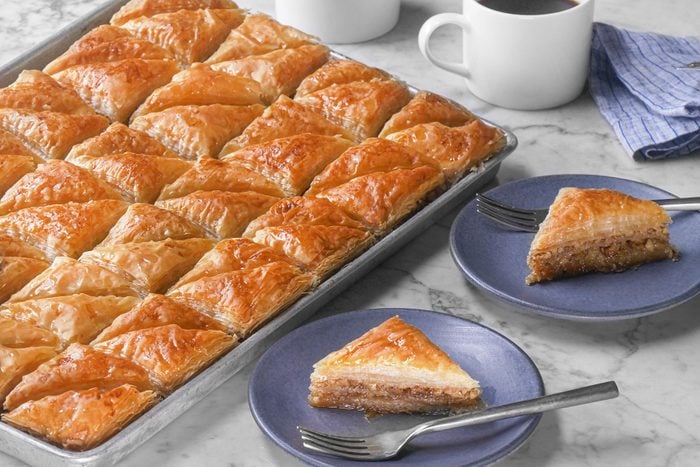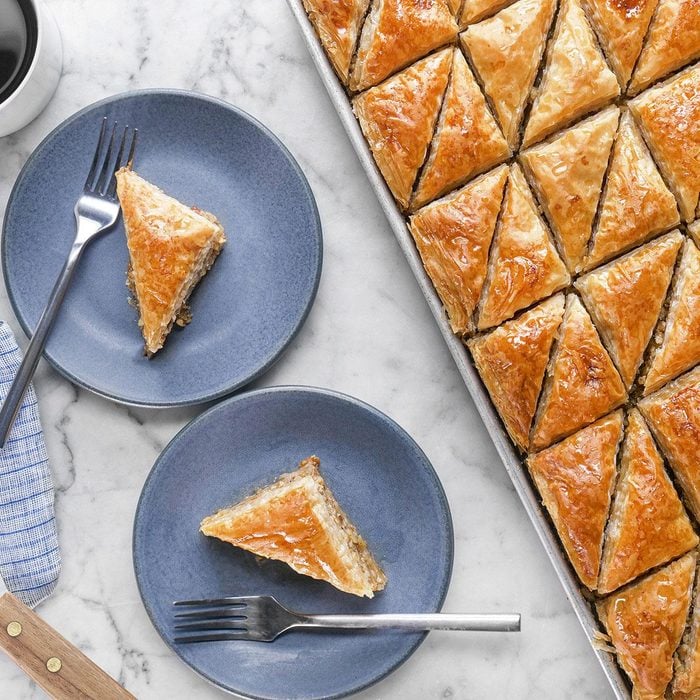Few desserts hold a candle to sticky, sweet, flaky baklava. This beloved sweet treat is complex with a multitude of flavors and textures. Maybe you’re always picking up a triangle (or three) of baklava at your local Middle Eastern cafe, or maybe you’ve traveled to Greece, where you ate a serving every night for dessert. Whenever and wherever you’ve enjoyed it, you’ve probably wondered how you can recreate your own baklava recipe at home.
It’s true that the phyllo layers of baklava make it a recipe that’s more intricate than the easiest desserts. But with a few basic baking tools and some patience, you’ll be on your way to making your own beautiful baklava, right in your own kitchen.
What is baklava?
Baklava is a pastry made of layered phyllo dough and chopped nuts, all drizzled with honeyed syrup. It’s baked as a layered sheet and cut into diamonds, triangles or squares for serving. Part of Middle Eastern and Mediterranean cuisines, baklava recipes vary among many regions of the world, including Greek, Lebanese, Moroccan and Turkish versions.
You might be most familiar with Greek or Turkish baklava. The Greek version uses walnuts and honey syrup. The Turkish version uses pistachios, and the syrup contains lemon juice rather than honey. The Lebanese and Moroccan versions use a variety of nuts, and the syrup isn’t quite as sweet; instead, orange blossom water or rose water flavors the syrup.
Baklava Ingredients
- Phyllo dough: To make baklava just like yiayia, you’ll want to start with a quality phyllo dough. Use a damp cloth to keep the sheets from drying out as you add layers.
- Walnuts: Slightly bitter, but satisfyingly crunchy, chopped walnuts give baklava its familiar filling. You can buy pre-chopped walnuts, or pulse whole walnuts in a food processor. (And, if you have extra, we have plenty of walnut recipes for you to use them up.)
- Butter: Use a basting brush to paint the melted butter over the phyllo sheets. The softened fat will give the baklava its characteristic richness and density.
- Sugar: Granulated sugar blends with the bitter walnuts to sweeten things. It also helps bring together the syrupy glaze you pour over the top of the warm baklava.
- Honey: Although there’s plenty of sugar to sweeten up this recipe, honey brings a warm candied flavor (and stickiness!) to this dessert. You can use basic honey or experiment with different types of honey for a flavor that suits your tastes.
Directions
Step 1: Make the nutty filling
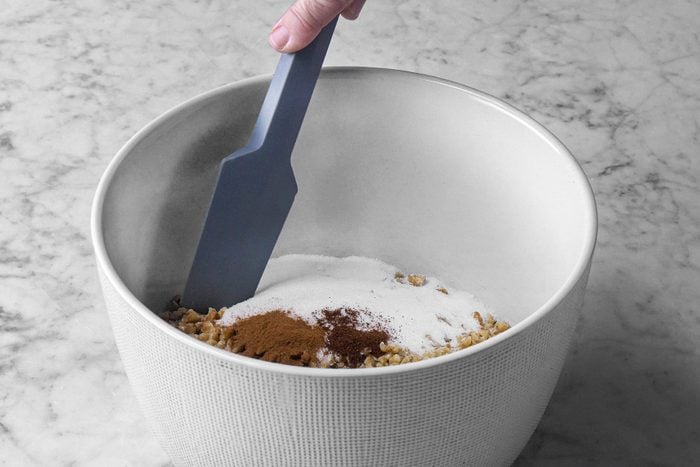
Preheat the oven to 350°F. In a small bowl, stir together the walnuts, sugar, cinnamon and cloves. Set aside.
Step 2: Prepare the baking pan and phyllo dough
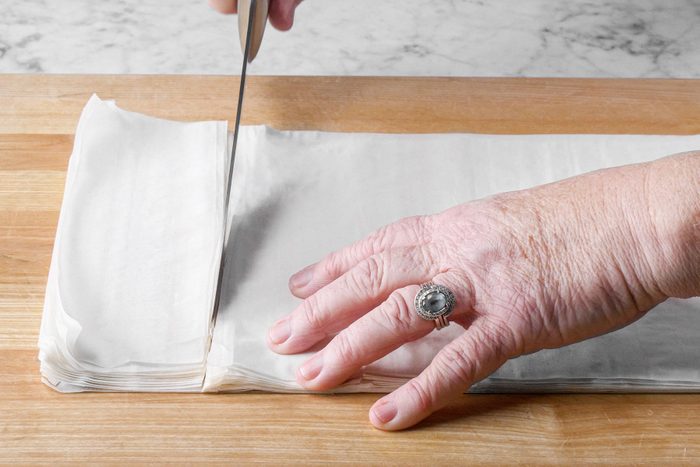
Using a basting brush, brush a 15x10x1-inch baking pan with butter. Unrol one package of phyllo dough; cut the stack into a 10-1/2×9-inch rectangle. Repeat with the other phyllo dough package. Discard the scraps.
Step 3: Create the phyllo dough layers
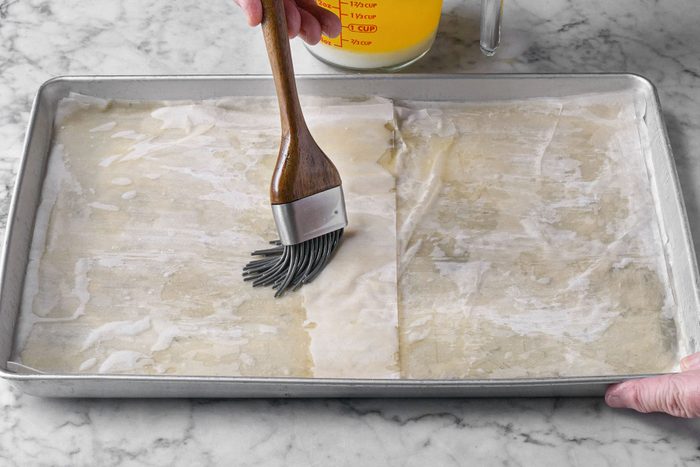
Line the bottom of the prepared pan with two sheets of phyllo dough (the sheets will overlap slightly). Brush with butter (not too much; you don’t want the sheets to be drenched!). Repeat the layers 14 times.
Editor’s Tip: Keep the unused dough covered with a damp towel as you work with it. This prevents the delicate phyllo dough from drying out.
Step 4: Finish the layers, then bake
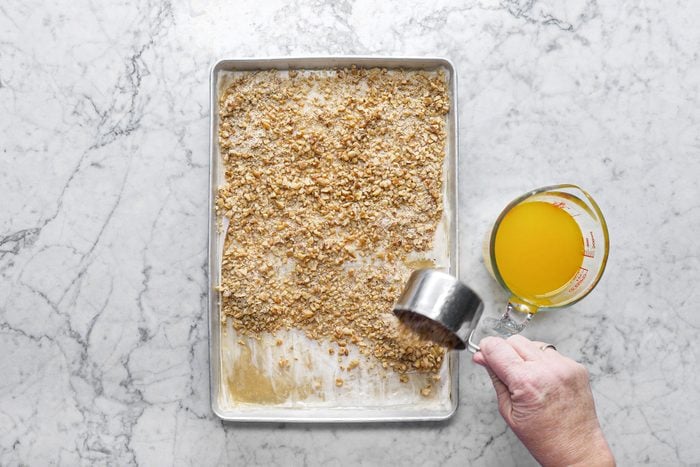
Spread the layered dough with 2 cups walnut mixture. Top with five layers of phyllo dough, brushing with butter between each sheet. Spread with remaining walnut mixture.
Top with one layer of phyllo dough, and brush with butter. Repeat 14 times.
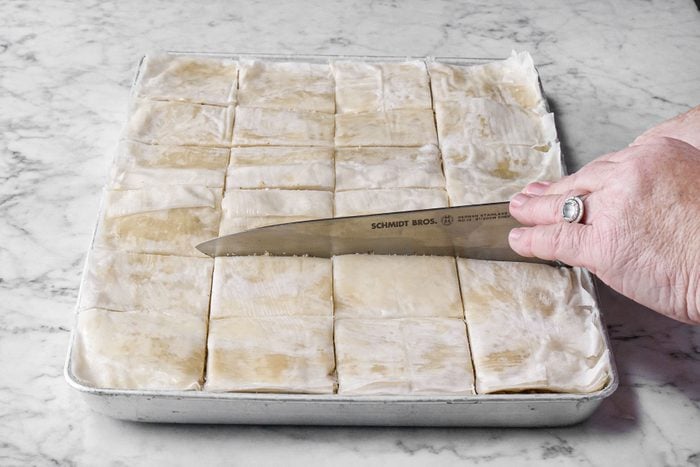
Cut the large rectangle into 2-1/2-inch squares. Cut each square in half diagonally. Brush the remaining butter over the tops of the triangles. Bake until golden brown, 40 to 45 minutes.
Step 5: Make the syrup
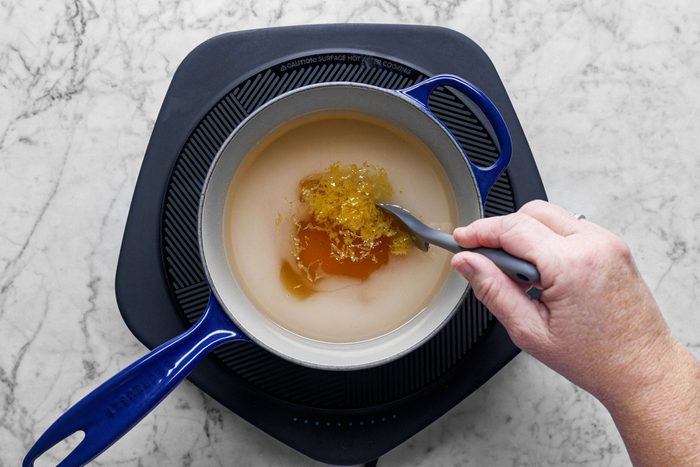
In a large saucepan, bring the sugar, water, honey and citrus zest to a boil. Reduce the heat, and simmer for 10 minutes.
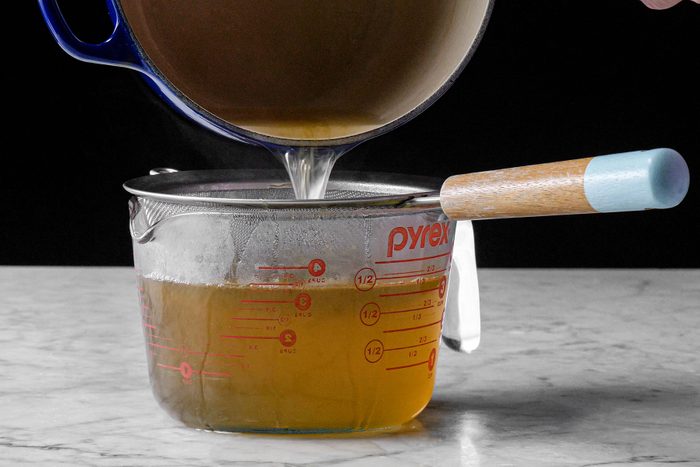
Strain the syrup with a mesh sieve, and discard the zest.
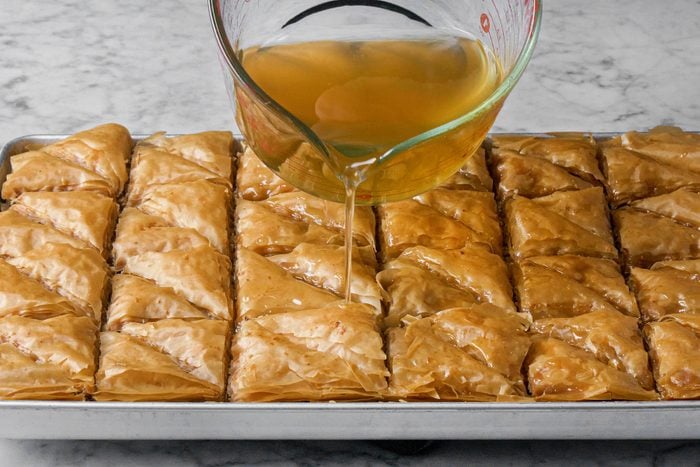
Cool the syrup to lukewarm. Pour it over warm baklava.
Baklava Variations
- Swap walnuts for pistachios: Try out the recipes from other regions by using pistachios instead of walnuts. You can also try chopped almonds, hazelnuts and pecans.
- Add flavors to the syrup: Instead of honey, try using rose water, lemon juice or orange blossom water to get a taste of other regional baklava recipes. Here’s our guide on how to use rose water in cooking and baking in case you have extra and want to add it to other recipes.
- Try making your own phyllo dough: Frozen phyllo is a game changer because it saves so much time. If you want to make baklava totally from scratch, however, try making your own phyllo dough at home! Phyllo dough differs from puff pastry in that it’s thinner and more difficult to make, but it’s certainly worth it if you like a baking challenge!
How to Store Baklava
Storing baklava at room temperature does help retain its crispy texture, but we don’t recommend keeping it out for too long. Once completely cooled, cover the baklava tightly, and store it at room temperature for one or two days. To maintain its freshness, transfer your covered baklava to the fridge, where it can stay up to two weeks.
Baklava Tips
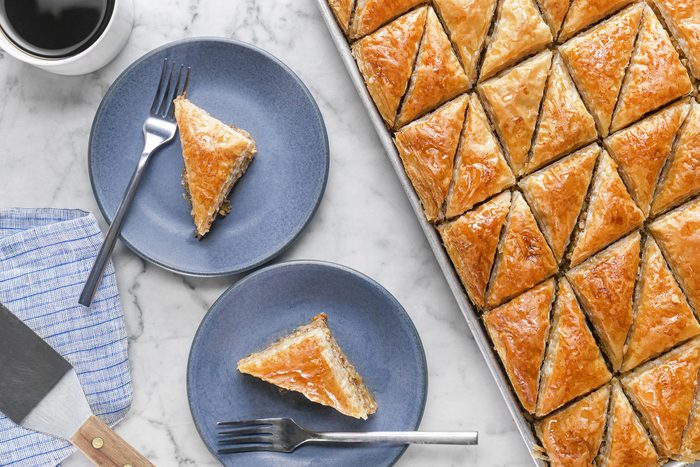
Do you eat baklava warm or cold?
Baklava is typically served at room temperature. This gives the flavors time to marry once they’re out of the oven, and it’ll give the syrup time to soak through all the layers.
Why does baklava go soggy?
Too much butter on the phyllo sheets can result in a soggy dessert. A delicate brush of butter on each sheet rather than dousing the sheets will give you the soft-yet-crisp outcome you’re used to with bakery baklava.
